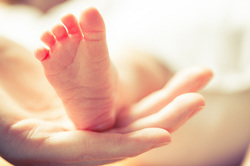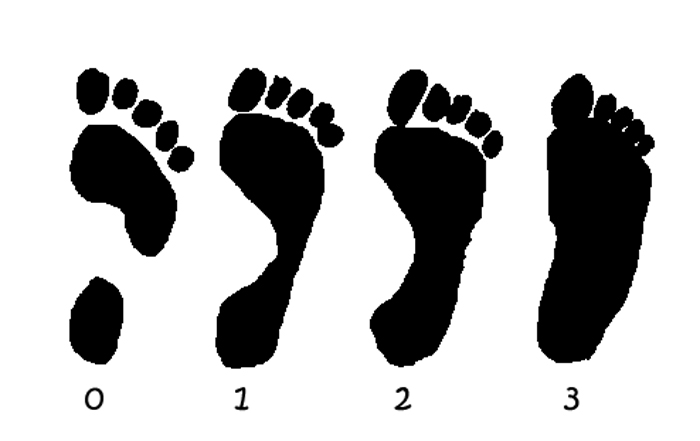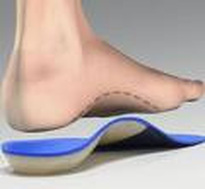Flat Feet

Flatfoot refers to a condition where the medial arch on the bottom of the foot is decreased, this is noted early in childhood. Fallen arches is a common term used to describe the flattening of the foot in the adult popluation. Flatfoot is usually noticed early on in life. Most children usually begin with a flexible flattened foot as the bony arch or structure of the foot in incompletely formed. After the age of approximately 5-8 years old resolution or an increase in height is usually noted as the boney structures foot and leg forms. If the foot continues in a flattened position/or flattening occurs later in life problems such as bunions, hammertoes, neuromas, and arthritis are more likely to occur because of this biomechanical variation. Flattening of a foot can also cause increased fatigue. Abnormal alignment of the foot usually requires compensation from other joints and soft tissues to function "normally". This compensation can cause increased stress and overuse especially on joints of the knees, hips, and foot joints.
There are many different treatment option both non surgical and surgical available. An evaluation by your foot and ankle doctor is helpful to note progression of the problem so that a tailored treatment plan can be addressed to provide the best chance of either resolution or prevention of problems and compensatory patterns.
0-High arch (Cavus Foot), 1-Elevated arch, 2-Normal arch, 3-Low arch (Flat foot)
Flat foot: notice the heels turned outward as compaird to the leg. Left leg is worse than right. You see lateral ankle wrinkles, and the toes/forefoot is turned outwards. This can cause compensation and overuse at joints from the knees, hips, back etc.
There are many different treatment option both non surgical and surgical available. An evaluation by your foot and ankle doctor is helpful to note progression of the problem so that a tailored treatment plan can be addressed to provide the best chance of either resolution or prevention of problems and compensatory patterns.
0-High arch (Cavus Foot), 1-Elevated arch, 2-Normal arch, 3-Low arch (Flat foot)
Flat foot: notice the heels turned outward as compaird to the leg. Left leg is worse than right. You see lateral ankle wrinkles, and the toes/forefoot is turned outwards. This can cause compensation and overuse at joints from the knees, hips, back etc.

